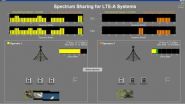NYU Courant researchers weigh methods to more accurately measure genome sequencing
2012-02-06
(Press-News.org) Lost in the euphoria of the 2003 announcement that the human genome had been sequenced was a fundamental question: how can we be sure that an individual's genome has been read correctly?
While the first full, individual genome was sequenced a decade ago, given the vast genetic variation across the world's seven billion people, not to mention the differences in makeup even among close relatives, the question of accurate sequencing for individuals has continued to vex researchers.
With companies now projecting they can sequence a genome for a $1,000, down from $25,000 just a few years ago, and efforts to develop "personalized" medicines, this matter is taking on increased significance in today's marketplace. These cheaper endeavors rely on newer technologies, which assume that scientists can continue to use the standard shotgun approach of randomly chopping down the genome into smaller pieces and then reassembling them algorithmically. Specifically, today's lower cost is achieved by breaking the DNA into even tinier pieces and rapidly and cheaply reading a massive amount of them. But it is not clear how to assess the accuracy of the newer assembly algorithms and the basic shotgun approach, especially if the accuracy of the earlier genomic data is questionable.
Among the particular challenges in confirming the accuracy of the sequencing of an individual's genome is matching a person's phenotype, or physical trait, with his or her genotype, or genetic makeup. This has served, in particular, as a barrier to successful development of personalized medicines, which were predicted shortly after the first sequencing of the human genome, but have yet to truly materialize.
In an article in the journal PLoS One, researchers at New York University's Courant Institute of Mathematical Sciences evaluate some current methods to sequence individual genomes—a study that serves as a "stress test" of the efficacy of these practices.
The researchers employed testing procedures that aim to identify key, or representative, features of the genome as well as how each of these features is related to others.
"Most current technologies, when assembling a genome, make several kinds of mistakes when they encounter a repeated region—where a substring of the letters that make up DNA strands re-occur in many locations in the genome," explained Bud Mishra, a professor of computer science and mathematics and the study's senior author. "The input random reads tend to collect in one such location, and also show much higher discrepancies among themselves."
To test the viability of these procedures, the NYU researchers relied on a collection of features from an open-source software, AMOS, developed by a public consortium of genomicists and bioinformaticists. If a method has accurately sequenced an individual's entire genome, the researchers hypothesized, then the components of that method's creation should "fit together," and will be consistent with other auxiliary data like "mate pairs," "optical maps," or "strobed sequences," all of which constitute long-range information from the genome. Currently, the use of mate pairs is quite common in sequence assembly and validation algorithms, but not the other two.
While they found shortcomings in all examined methods for sequencing an individual's genome, some assemblers showed promise. The NYU researchers' conclusions were derived from a procedure called Feature-Response Curve (FRCurve), which effectively shows a global picture of how different assemblers are able to deal with different regions and different structures in a large complex genome. In this way, it also points out how an assembler might have traded off one kind of quality measure at the expense of another kind. For instance, it shows how aggressively a genome assembler might have tried to pull together a group of genes into a contiguous piece of the genome, while incorrectly rearranging their correct order and copy-numbers.
"Such errors have important consequences, especially if the technology is being used to study the genome of a tumor, which often can be highly heterogeneous, making each tumor cell's genome rearranged and mutated very differently from its neighbors'," explained Mishra.
###
The study's other co-authors were NYU summer visitor Francesco Vezzi, now at Italy's University of Udine, and NYU graduate student Giuseppe Narzisi, now at Cold Spring Harbor Laboratory.
The study was supported by the National Science Foundation and Abraxis BioScience, LLC.
END
ELSE PRESS RELEASES FROM THIS DATE:
2012-02-06
Nearly all organisms contain pieces of DNA that do not really belong to them. These "transposable elements", so called because they are capable of moving around within and between genomes, generally represent a drain on the host's resources and in certain cases may lead directly to disease, e.g. when they insert themselves within an essential host gene. The factors that govern the spread of transposable elements within a population are broadly understood but many of the finer points remain unclear. New work at the University of Veterinary Medicine, Vienna (Vetmeduni ...
2012-02-06
A team of Spanish researchers have used different geological samples, extracted from the Enol lake in Asturias, to show that the Holocene, a period that started 11,600 years ago, did not have a climate as stable as was believed.
The Holocene period, which includes the last 11,600 years of our history, has always been described as a stable period in terms of climatic conditions, especially when compared to the abrupt changes that occurred in the last ice age, which ended around 10,000 years ago, giving way to the Holocene.
A study carried out by researchers from the Pyrenean ...
2012-02-06
Smartphones and tablets are some of the big sellers of the past year. Mobile Internet usage has increased rapidly with the sales success: according to a study of the industry association VATM, in 2011 the average data volume per mobile Internet user increased by 82 percent in Germany. In contrast to its predecessor UMTS, with the new LTE mobile radio standard, the clearly higher data rates and the shorter signal transmission times, providers want to cover the expected traffic. That is why the expansion of the LTE network is being pursued aggressively. Providers are setting ...
2012-02-06
London, UK – A new editorial released this week offers clarity and structure on confusing drug and alcohol addiction terminology for prescribers, users and regulators. "Through a glass darkly: can we improve clarity about mechanism and aims of medications in drug and alcohol treatments?" is published in the Journal of Psychopharmacology, the official journal of the British Association for Psychopharmacology, published by SAGE.
David Nutt and Anne Lingford-Hughes of Imperial College London's Neuropsychopharmacology Unit together with Jonathan Chick from Queen Margaret ...
2012-02-06
If you wanted to draw your family tree, you could start by searching for people who share your surname. Cells, of course, don't have surnames, but scientists at the European Molecular Biology Laboratory (EMBL) in Heidelberg, Germany, have found that genetic switches called enhancers, and the molecules that activate those switches – transcription factors – can be used in a similar way, as clues to a cell's developmental history. The study, published today in Cell, also unveils a new model for how enhancers function.
Looking at fruit fly embryos, Guillaume Junion and Mikhail ...
2012-02-06
The journey for the family holiday can be a long one. To avoid the incessant "Are we there yet?", stressed parents gladly hand their smartphones to the back seat – so the kids can watch videos or movies on the internet. While modern technology provides for entertainment, it occasionally reaches its limits and then the whining returns: The movies sometimes judder, or are completely interrupted. The cause may be twofold: If the user is standing at the basin of a valley and has poor reception, the data stream transmission rate is inadequate and the cellphone cannot download ...
2012-02-06
Mars may have been arid for more than 600 million years, making it too hostile for any life to survive on the planet's surface, according to researchers who have been carrying out the painstaking task of analysing individual particles of Martian soil. Dr Tom Pike, from Imperial College London, will discuss the team's analysis at a European Space Agency (ESA) meeting on 7 February 2012.
The researchers have spent three years analysing data on Martian soil that was collected during the 2008 NASA Phoenix mission to Mars. Phoenix touched down in the northern arctic region ...
2012-02-06
A painstakingly detailed investigation shows that mass extinctions need not be sudden events. The deadliest mass extinction of all took a long time to kill 90 percent of Earth's marine life, and it killed in stages, according to a newly published report.
Thomas J. Algeo, professor of geology at the University of Cincinnati, worked with 13 co-authors to produce a high-resolution look at the geology of a Permian-Triassic boundary section on Ellesmere Island in the Canadian Arctic. Their analysis, published Feb. 3 in the Geological Society of America Bulletin, provides strong ...
2012-02-06
PHILADELPHIA -- Soy isoflavone supplements did not decrease breast cancer cell proliferation in a randomized clinical trial, according to a study published in Cancer Prevention Research, a journal of the American Association for Cancer Research.
Lead researcher Seema A. Khan, M.D., professor of surgery at the Robert H. Lurie Comprehensive Cancer Center of Northwestern University, said the results of this study are consistent with the findings of previous studies that were designed to test cancer prevention benefits of dietary supplements.
"Simply put, supplements are ...
2012-02-06
Older people feel that their health problems pose a challenge to their sense of independence, dignity and identity and sometimes the health care they are given makes things worse.
According to research funded by UK Research Councils' New Dynamics of Ageing programme (NDA), healthcare providers must avoid taking a 'blanket view' of how to help older people cope with the ageing process.
The study carried out by Dr Liz Lloyd and her colleagues found that people were often surprised by the impact that illness and growing old had on their lives. Their sense of 'self' was ...
LAST 30 PRESS RELEASES:
[Press-News.org] NYU Courant researchers weigh methods to more accurately measure genome sequencing



